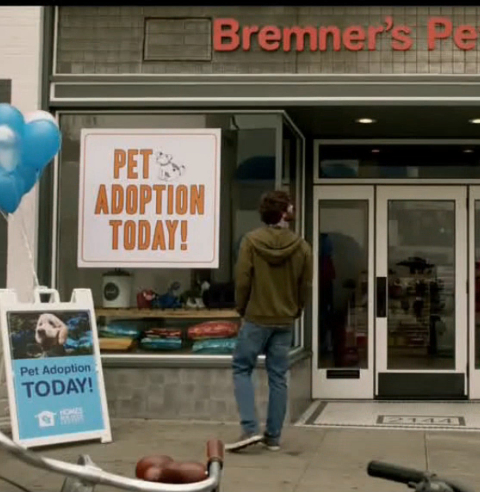The Human response to Pet Rescue TV Commercials
Main Article Content
Abstract
According to the American Society for the Prevention of Cruelty to Animals, 6.5 million abandoned pets are housed in shelters in the United States. Of those who are sheltered 670,000 dogs are euthanized. An opportunity exists to reduce the number of euthanized animals, primarily through adoption. Several benefactors to this animal rescue initiative have prompted pet rescue adoption through television commercials. This study explored the perception of viewer “attitude toward the ad” and “intent to adopt” for a pet rescue television commercial. Study respondents (N=335) watched “Somebody to Love” a commercial featuring a lonely man and his emotional attachment with an abandoned dog. Gender identity was significantly related to attitudes toward the commercial. Participants identifying themselves as feminine held more favorable attitudes towards the commercial, whereas participants identifying as more masculine reported less favorable attitudes towards the commercial. Work status and ethnicity were also significant predictors of attitude toward the ad. Non-workers were more highly responsive to the commercial, than were students or those in working capacity. Participants identifying as any ethnicity other than white held less favorable attitudes towards the commercial, which features white actors. This implies it is important to examine commercial content regarding plot and context, as the viewer response is affected by gender, ethnicity and employment status. Producers of future animal rescue commercials should consider content specific to alternate human identities, where rescue animals can facilitate a common compassion among potentially discordant identity groups.
Downloads
Article Details
Authors will be the copyright proprietor of their own work although they have accepted to use a creative common license, specifically CC-Attribution-NonComercial-ShareAlike_4.0
References
Amyx, D. (2017). The Effects of Values, Advertising Characteristics, and Animal Companion Preference on Consumer Attitudes and Purchase. In Creating Marketing Magic and Innovative Future Marketing Trends (pp. 65–82). Springer, Cham. https://doi.org/10.1007/978-3-319-45596-9_15
Coldwell Banker TV Commercial, “Somebody to Love” - iSpot.tv. (n.d.). Retrieved January 3, 2018, from https://www.ispot.tv/ad/wVqv/coldwell-banker-love-somebody
Dotson, M., & Hyatt, E. M. (2008). Understanding dog–human companionship. Journal of Business Research, 61(5), 457–466. https://doi.org/10.1016/j.jbusres.2007.07.019
Grooms, W., & Biddle, D. (2018). Dogs and Crime. Society & Animals, 26(1), 34–53. https://doi.org/10.1163/15685306-12341465
Holbrook, M., Stephens, D., Holbrook, S., & Strazar, G. (2001). A collective stereographic photo essay on key aspects of animal companionship: The truth about dogs and cats. Academy of Marketing Science Review, 2001.
Katz, J. (2003). The New Work of Dogs: Tending to Life, Love, and Family. Villard.
Lundy, B. D., Adebayo, A. G., & Hayes, S. (2018). Atone: Religion, Conflict, and Reconciliation. Lexington Books.
Maharaj, N., Kazanjian, A., & Haney, C. (2016). The Human–Canine Bond: A Sacred Relationship: Journal of Spirituality in Mental Health: Vol 18, No 1. Retrieved from http://www.tandfonline.com/doi/abs/10.1080/19349637.2015.1047922?src=recsys&journalCode=wspi20
Markovits, A., & Queen, R. (2009). Women and the World of Dog Rescue: A Case Study of the State of Michigan. Society & Animals, 17(4), 325–342. https://doi.org/10.1163/106311109X12474622855147
Mondelli, F., Prato, E., Verga, M., Levi, D., Magistrelli, S., & Valsecchi, P. (2004). The Bond That Never Developed: Adoption and Relinquishment of Dogs in a Rescue Shelter. Journal of Applied Animal Welfare Science, 7(4), 253–266. https://doi.org/10.1207/s15327604jaws0704_3
Normando, S., Stefanini, C., Meers, L., Adamelli, S., Coultis, D., & Bono, G. (2006). Some factors influencing adoption of sheltered dogs. Anthrozoös, 19(3), 211–224. https://doi.org/10.2752/089279306785415556
Panoch, R., & Pearson, E. (2017). Humans and Sharks. Society & Animals, 25(1), 57–76. https://doi.org/10.1163/15685306-12341441
Parker, S. (2016). Gender Fluidity. In Ethical Ripples of Creativity and Innovation (pp. 165–173). Palgrave Macmillan, London. https://doi.org/10.1057/9781137505545_19
Pet Statistics. (n.d.). Retrieved January 29, 2018, from https://www.aspca.org/animal-homelessness/shelter-intake-and-surrender/pet-statistics
Pfetsch, B. (2018). Dissonant and Disconnected Public Spheres as Challenge for Political Communication Research. Javnost - The Public, 25(1–2), 59–65.
Phillips, B. (1996). Advertising and the Cultural Meaning of Animals. ACR North American Advances, NA-23. Retrieved from http://acrwebsite.org/volumes/7982/volumes/v23/NA-23
Protopopova, A., & Wynne, C. (2014). Adopter-dog interactions at the shelter: Behavioral and contextual predictors of adoption. Applied Animal Behaviour Science, 157, 109–116.
https://doi.org/10.1016/j.applanim.2014.04.007
Ramirez, M. (2006). “My Dog is Just Like Me”: Dog Ownership as a Gender Display. Symbolic Interaction, 29(3), 373–391. https://doi.org/10.1525/si.2006.29.3.373
Spears, N., & Surendra, N. (2004). Measuring Attitude toward the Brand and Purchase Intentions. Journal of Current Issues & Research in Advertising, 26(2), 53–66.
https://doi.org/10.1080/10641734.2004.10505164
Stanley, T. (2017, March 27). Coldwell Banker’s Adorable “Somebody to Love” Ad Extends Commitment to Pet Adoption. Retrieved January 3, 2018, from http://www.adweek.com/creativity/coldwell-bankers-adorable-somebody-to-love-ad-extends-commitment-to-pet-adoption/

